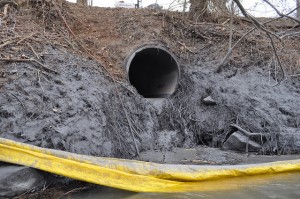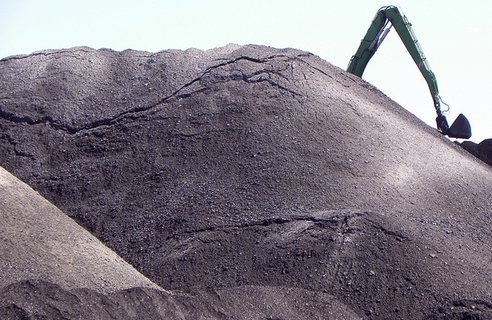
On Sunday, February 2, 2014, Duke Energy dumped nearly 39,000 tons of coal ash and 24 million gallons of wastewater into the Dan River near Eden, North Carolina. That’s a total of 140,000 tons of toxic waste and wastewater combined into the sensitive eco-system of the Dan River.
By the end of two weeks, a dark grey plume of this toxic by-product of coal-fired power had traveled 70 miles downstream, and where it settled on the riverbed. The spill and its aftermath made coal ash a national news story throughout 2014. The outrage of community members and advocates across the state, combined with the media attention to the environmental disaster eventually exposed cozy relationships between Duke and the state agency that was supposed to be protecting the public and NC’s waterways. Today, many communities across the state are left with the foreboding possibility that a similar disaster could unfold at one of Duke’s other sites.
In December 2014, EPA finally released its long-awaited rules on coal ash. EPA was prompted by an even bigger coal ash disaster in Kingston, TN that occurred over six years ago. Despite the clear risks, the agency declined to regulate the toxic substance as “hazardous” and offered only a weak set of rules that leave accountability to the utilities themselves, state environmental agencies, and citizen suits. Already, Congress is trying to dismantle even this inadequate rule. In the absence of strong, federal safeguards, there are important steps that NC communities, state agencies, the legislature, and Duke Energy can take to ensure that a coal ash disaster won’t happen in NC again.
Duke should prioritize removing coal ash to lined landfills away from waterways
Most of Duke’s coal ash is stored in unlined, wet-impoundments – toxic lagoons that are nearly impossible to safely operate. The Dan River disaster was a failure of Duke’s routine maintenance, not a natural disaster. The safest way to address coal ash is to remove the waste from old, leaking impoundments and to dry, lined storage away from waterways, and this needs to happen ASAP. We know that when utilities prioritize cleanup, it can happen fast. As the result of a lawsuit, in November 2013, one South Carolina’s utilities Santee Cooper agreed to move coal ash from its unlined impoundments by the end of 2023. The utility is currently ahead of schedule having already removed over 164,000 tons from its Grainger facility on the Waccamaw River in Conway, South Carolina. At its current rate of removal, Santee Cooper will complete cleanup by 2019, four years ahead of schedule.
In June 2015, Duke announced it will recommend excavation of coal ash impoundments at its Cape Fear (Moncure, N.C.), H.F. Lee (Goldsboro, N.C.), and W. H. Weatherspoon (Lumberton, N.C.) facilities. With the addition of these three facilities, Duke now plans to fully excavate 39 tons of coal ash at nine of 16 facilities throughout the Carolinas, including seven of its 14 facilities in North Carolina. Additionally, Duke will excavate one inactive basin at the Cliffside Steam Station (Mooresboro, N.C.).
Duke’s plan is a step in the right direction, but we want to see all communities and waterways in North Carolina and throughout our region offered the same kind of solid protections from toxic coal ash. Duke and other utilities in the Southeast should move coal ash away from our rivers and waterways to lined, dry storage at every one of their plants.

We need to keep the pressure on!
Advocates are also bringing legal pressure to bear: SACE joined a lawsuit to compel Duke Energy to clean up its coal ash pollution from the Dan River site once and for all. And our allies across the state (Appalachian Voices, Cape Fear Riverwatch, Catawba Riverkeeper Foundation, Dan River Basin Association, MountainTrue, Neuse Riverkeeper Foundation, Roanoke River Basin Association, Sierra Club, Southern Alliance for Clean Energy, Waterkeeper Alliance, Winyah Rivers Foundation, and Yadkin Riverkeeper) are ensuring that all the other locations are also cleaned up. We are all represented in these cases by the Southern Environmental Law Center.
Today, as we reflect on the damage done to our environment and communities due to coal ash and Duke’s recklessness, it’s clear that we need our state agencies, our legislature, and Duke to pursue coal ash clean-up with urgency. Only continuous public pressure and scrutiny can ensure that they do.
We’ve archived a year’s worth of media stories on the Dan River spill from 2014-2015, check them out here.
Create-Your-Own Coal Ash Report
Full control to create the report of your choosing listing coal plants with ash impoundments in the Southeast.
Create your report NOW!
